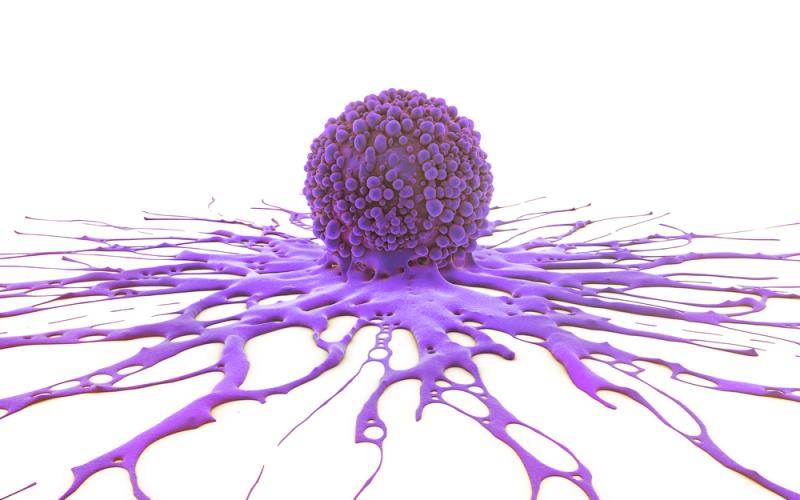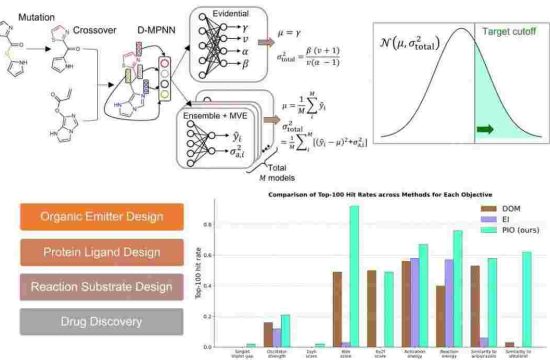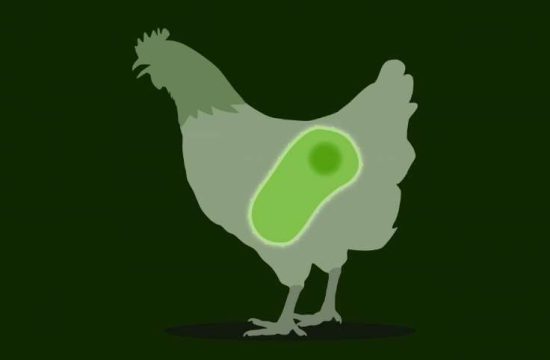 For patients with difficult-to-treat cancers, doctors increasingly rely on genomic testing of tumors to identify errors in the DNA that indicate a tumor can be targeted by existing therapies. But this approach overlooks another potential marker — rogue proteins — that may be driving cancer cells and also could be targeted with existing treatments.
For patients with difficult-to-treat cancers, doctors increasingly rely on genomic testing of tumors to identify errors in the DNA that indicate a tumor can be targeted by existing therapies. But this approach overlooks another potential marker — rogue proteins — that may be driving cancer cells and also could be targeted with existing treatments.
If DNA can be described as the body’s genetic blueprint, proteins can be thought of as the construction workers who carry out the plan. Studying the blueprint can be vital to understanding genetic diseases, including cancer, but that focus also means that some problems arising with the workers may be missed.
Studying mice with breast tumors transplanted from patients, researchers at Washington University School of Medicine in St. Louis, The Broad Institute of MIT and Harvard, and Baylor College of Medicine have analyzed the proteins present in these tumors. The researchers demonstrated that some protein alterations can be used to identify drugs that may work against some cancers. The work is part of the National Cancer Institute’s (NCI) Clinical Proteomic Tumor Analysis Consortium efforts.
“Proteins carry out most of the biological functions in the cell,” said senior author Li Ding, PhD, an associate professor of medicine at Washington University. “Knowing the DNA sequence does not automatically tell us everything about the proteins doing work in the cells. This is another layer of tumor complexity that we need to explore to identify new therapies.”
Ding said recent advances in a technology called mass spectrometry and in techniques to analyze massive quantities of data have made complex studies of the proteins in tumor cells possible. Another reason to prioritize the systematic study of proteins in tumors — cancer proteomics — is that the vast majority of cancer therapies developed from genetic studies actually target proteins.
“Identifying the rogue proteins of cancer is an important pathway toward developing new drugs,” said co-author R. Reid Townsend, MD, PhD, a professor of medicine and director of the Proteomics Shared Resource at Washington University.
“We can use proteomics to confirm and validate our genomics findings,” said Ding, also an assistant director of The McDonnell Genome Institute at Washington University School of Medicine. “In addition, it’s another tool to uncover additional events that drive cancer and are specific to individual patient tumors, including the amount of the ‘rogue’ protein, its specific form, or the type and extent of chemical modifications of the proteins that we know are treatable with approved or investigational drugs. We also can test these therapies in the mice before we evaluate them in patients.”
Steven A. Carr, PhD, of the Broad Institute, said the team analyzed a chemical modification called phosphorylation, which plays a central role in how healthy, as well as diseased, cells communicate.
“Disruption or enhancement in such signaling is often directly related to disease mechanism and can be targeted for therapy,” Carr said.
The researchers studied 24 tumor samples from breast cancer patients after the samples were transplanted into mice. Twenty-two of the transplanted samples retained their genetic and proteomic identities as specific types of breast cancer. A proteomic analysis of the tumors also identified multiple protein targets that have the potential to respond to drugs.
For example, the researchers showed dialed-up activity of multiple protein pathways that could be targeted with investigational drugs called PI3K inhibitors and mTOR inhibitors, separately and in combination, depending on the tumor. They also showed that drugs against a type of breast tumor called HER2 positive breast cancer — such as the dual ERBB2/EGFR inhibitor lapatinib — potentially could benefit more patients than currently receive them, if analysis of the tumor proteins is taken into consideration.
While most of these tumor models recapitulated specific types of breast cancer, Ding said the scientists were surprised to see that two of the 24 tumors evolved into a completely different type of cancer after transplantation into the mice. Instead of breast cancer, they resembled lymphoma and were driven by the cancer-causing virus Epstein-Barr, according to the researchers. Lymphomas are cancers of immune cells that may have arisen from lymphatic tissue present in the breast tumors transplanted into the mice.
The analysis of the lymphoma-like cancers was the first proteomic study of this type of tumor. Though unintentional, Ding said the analysis provides an explanation for why investigational drugs that inhibit a protein called BTK have been effective in treating patients with lymphoma.
“Since it is the proteins that interact directly with drugs, the strength of studying proteomics in patient-derived tumor models is the ability to test drug treatment in the mice,” Ding said. “With advances in cancer proteomics that increase the speed of measurement, we are moving toward a future that includes genomic and proteomic analyses of patient tumors.”
Co-author Matthew J. Ellis, MD, PhD, of Baylor, agreed. “The mouse work is promising enough to adapt these technologies for real time analysis of patient materials so that clinical trials can be designed to test this new diagnostic and drug selection approach,” he said.
The study is published March 28 in Nature Communications.








